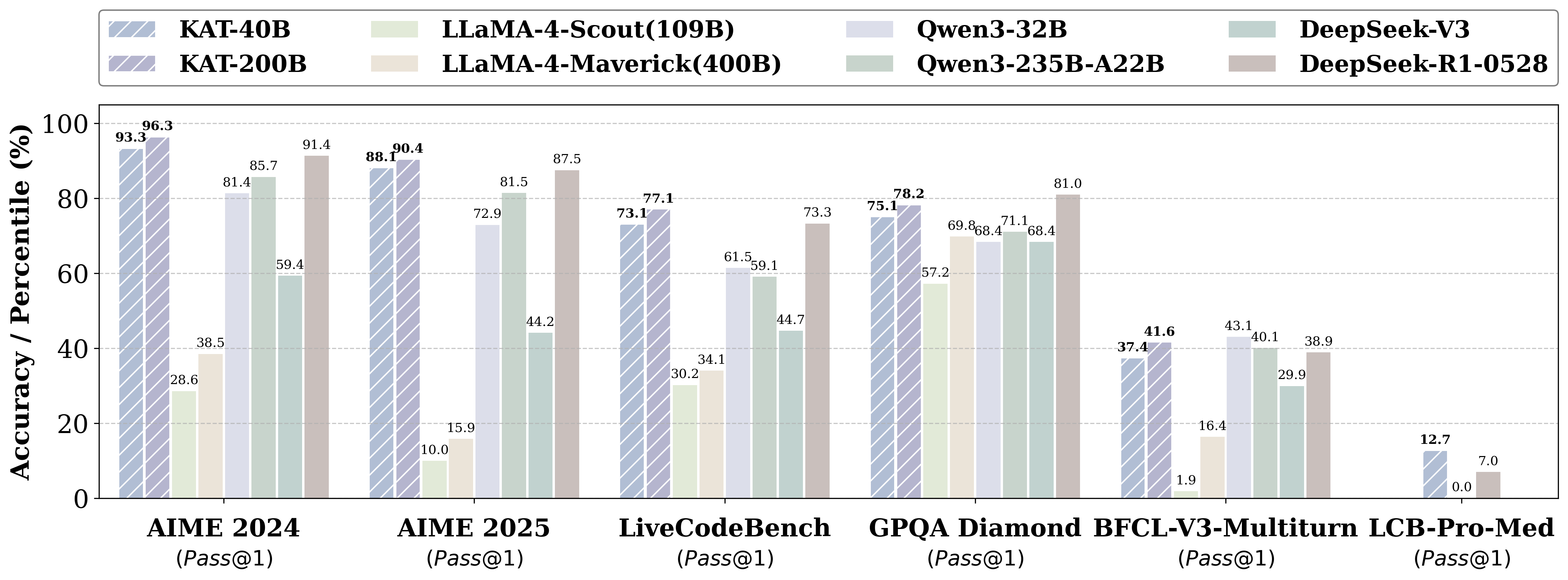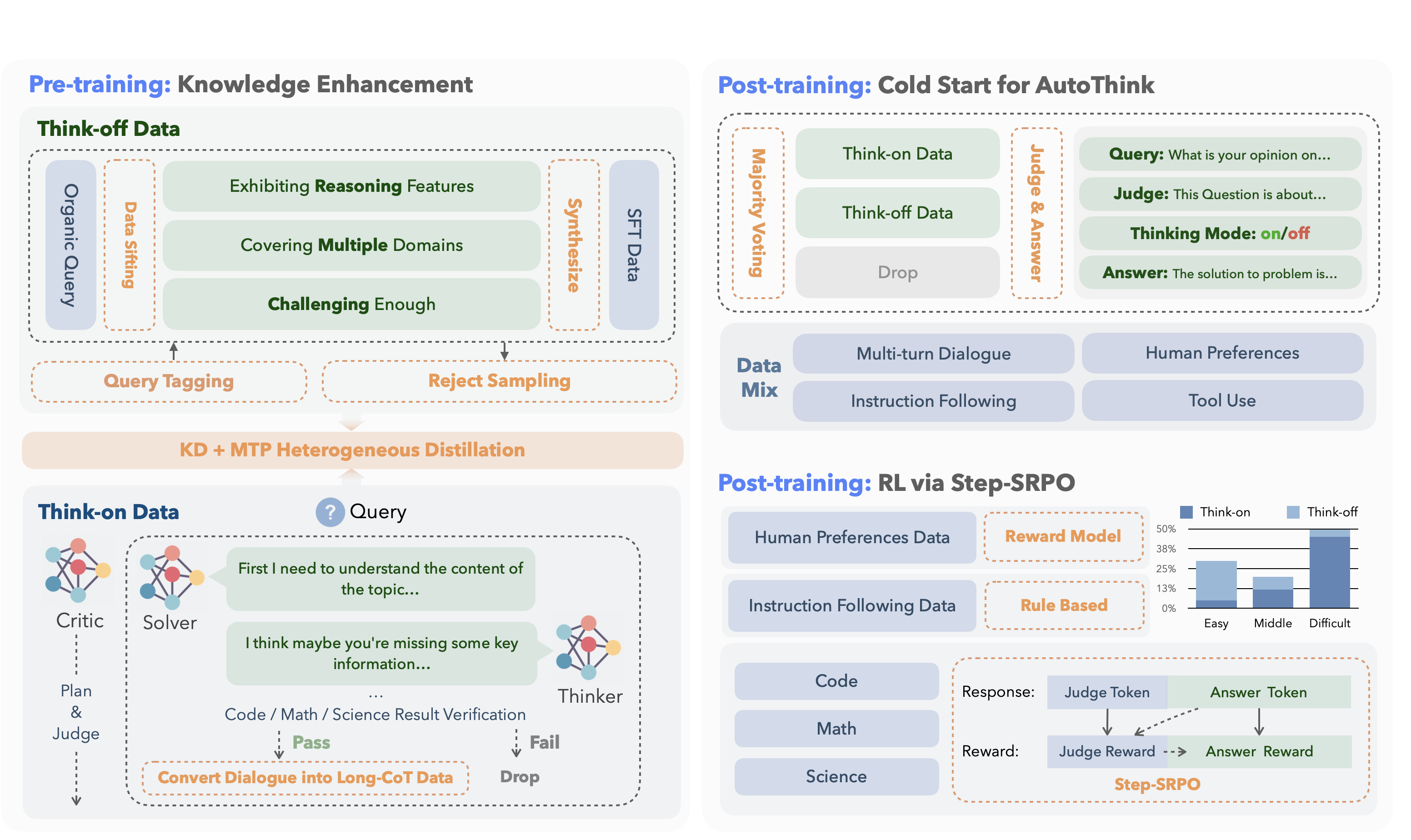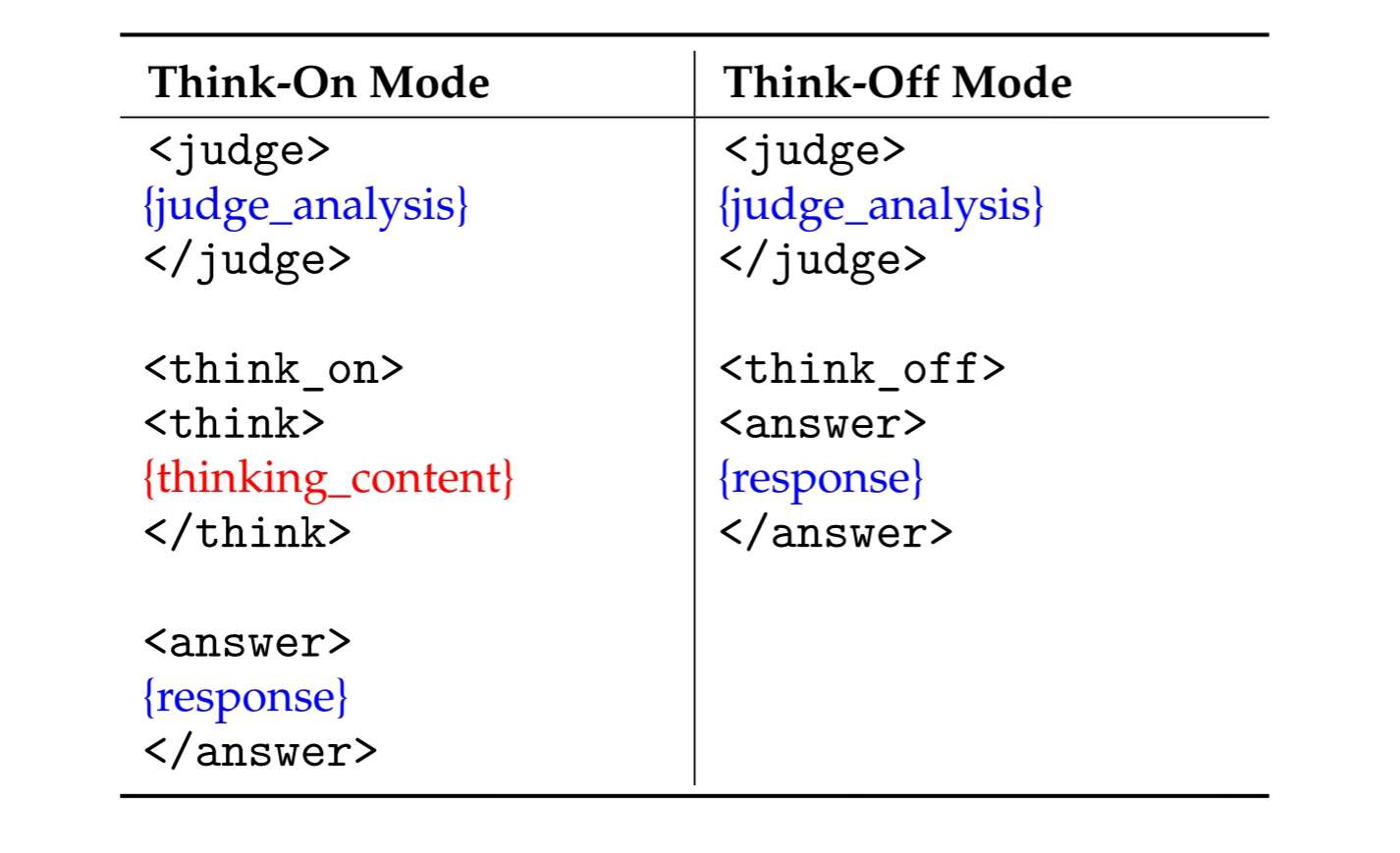快手开源 Kwaipilot-AutoThink 思考模型,有效解决过度思考问题

新闻
- 在专为防止数据泄露设计的挑战性基准测试LiveCodeBench Pro中,Kwaipilot-AutoThink位列所有开源模型榜首,甚至超越了Seed和o3-mini等强大的专有系统。
介绍
KAT(Kwaipilot-AutoThink) 是一个开源大语言模型,通过学习何时生成显式思维
链及何时直接作答,有效缓解过度思考问题。

它的发展遵循简洁的两阶段训练流程:
• 通过定制标签系统标注的非思考型查询
• 由多智能体求解器生成的思考型查询
知识蒸馏 + 多标记预测实现细粒度效用
分步SRPO —— 中间监督机制奖励正确的模式选择及该模式下的答案准确性

数据格式
KAT生成的响应采用结构化模板,使推理路径清晰且机器可解析。
支持两种模式:

特殊标记
think_on时,标记思维链片段的开始。🔧 Quick Start
from transformers import AutoTokenizer, AutoModelForCausalLMmodel_name = \"Kwaipilot/KAT-V1-40B\"# load the tokenizer and the modeltokenizer = AutoTokenizer.from_pretrained(model_name, trust_remote_code=True)model = AutoModelForCausalLM.from_pretrained( model_name, torch_dtype=\"auto\", device_map=\"auto\")# prepare the model inputprompt = \"Give me a short introduction to large language model.\"messages = [ {\"role\": \"user\", \"content\": prompt}]text = tokenizer.apply_chat_template( messages, tokenize=False, add_generation_prompt=True)model_inputs = tokenizer([text], return_tensors=\"pt\").to(model.device)# conduct text completiongenerated_ids = model.generate( **model_inputs, max_new_tokens=65536, temperature=0.6, top_p=0.95,)output_ids = generated_ids[0][len(model_inputs.input_ids[0]):].tolist() content = tokenizer.decode(output_ids, skip_special_tokens=True).strip(\"\\n\")print(\"prompt:\\n\", prompt)print(\"content:\\n\", content)\"\"\"prompt:Give me a short introduction to large language model.content:The user\'s request is to provide a concise factual introduction to large language models, which involves retrieving and summarizing basic information. This task is straightforward as it only requires recalling and presenting well-known details without deeper analysis. No complex reasoning is needed here—just a simple explanation will suffice.A **Large Language Model (LLM)** is an advanced AI system trained on vast amounts of text data to understand, generate, and process human-like language. Here’s a concise introduction:### Key Points:1. **Training**: Trained on diverse text sources (books, websites, etc.) using deep learning.2. **Capabilities**: - Answer questions, generate text, summarize content, translate languages. - Understand context, sentiment, and nuances in language.3. **Architecture**: Often based on **transformer models** (e.g., BERT, GPT, LLaMA).4. **Scale**: Billions of parameters, requiring massive computational resources.5. **Applications**: Chatbots, content creation, coding assistance, research, and more.### Examples:- **OpenAI’s GPT-4**: Powers ChatGPT.- **Google’s Gemini**: Used in Bard.- **Meta’s LLaMA**: Open-source alternative.### Challenges:- **Bias**: Can reflect biases in training data.- **Accuracy**: May hallucinate \"facts\" not grounded in reality.- **Ethics**: Raises concerns about misinformation and job displacement.LLMs represent a leap forward in natural language processing, enabling machines to interact with humans in increasingly sophisticated ways. 🌐🤖\"\"\"

